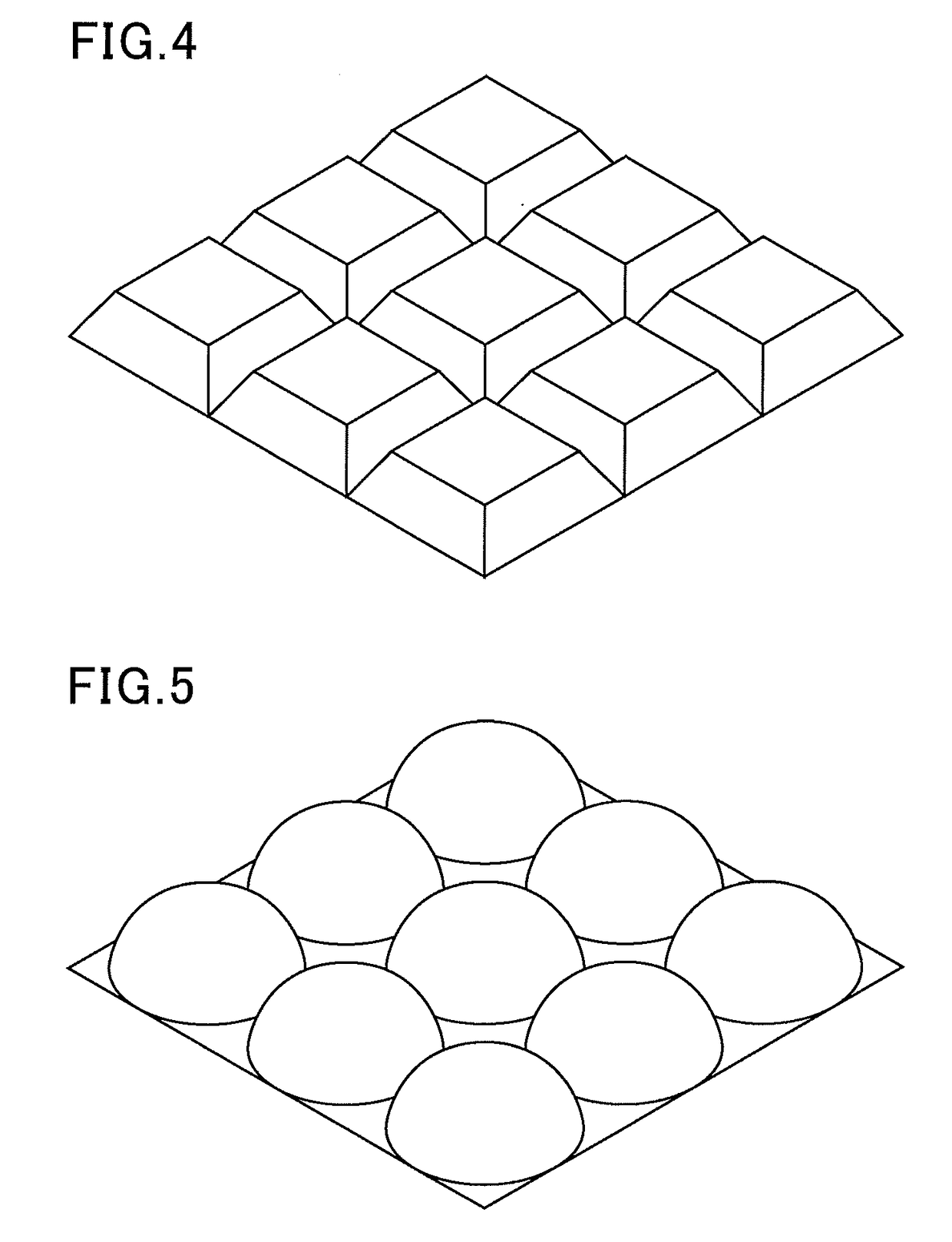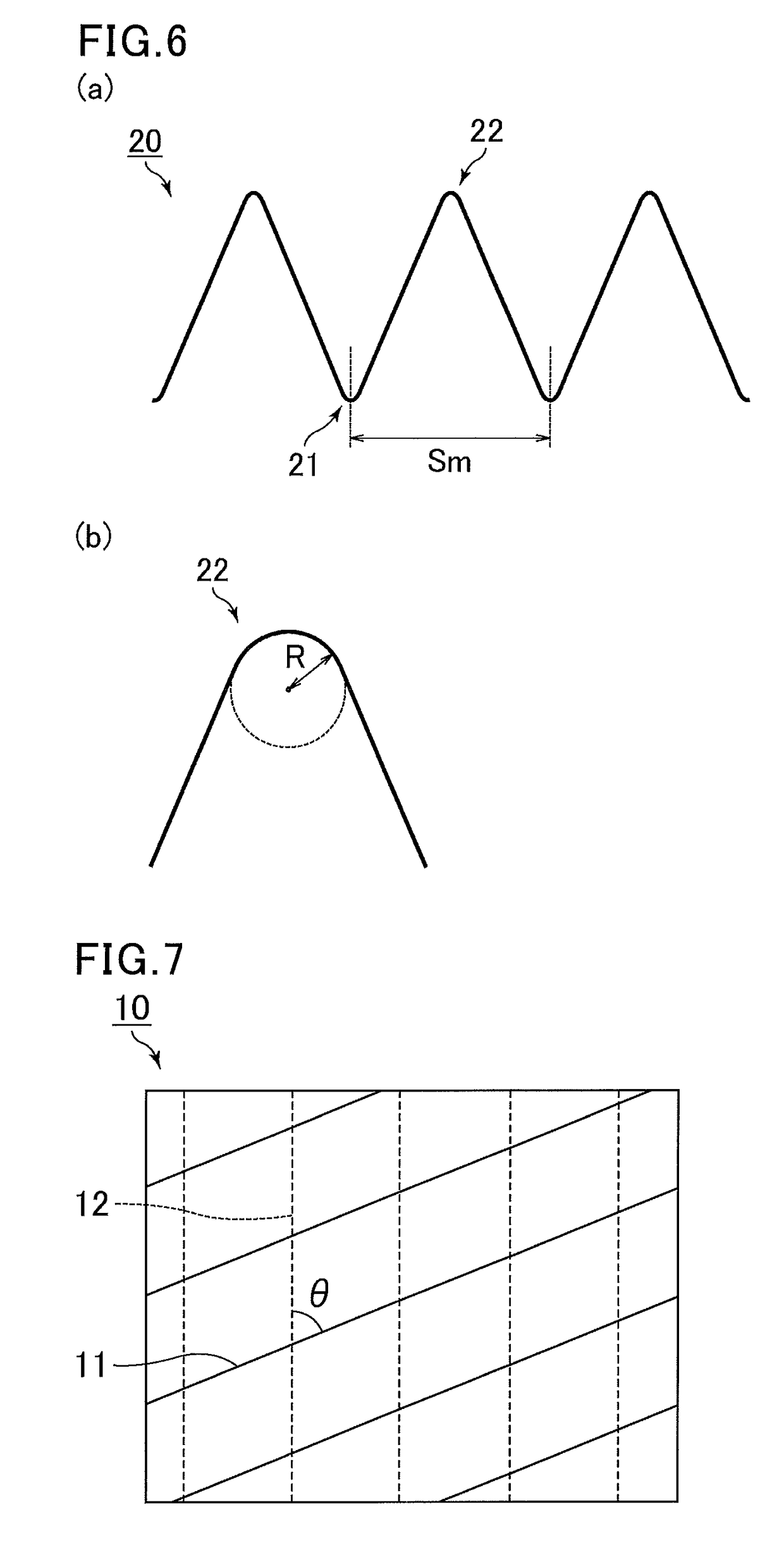Interlayer for laminated glass, laminated glass, and production method for interlayer for laminated glass
a technology of laminated glass and interlayers, which is applied in the direction of layered products, synthetic resin layered products, chemistry apparatus and processes, etc., can solve the problems of not being able to be peeled by a machine transporting interlayer films for laminated glass or by human power, and achieves the effect of easy peeling
- Summary
- Abstract
- Description
- Claims
- Application Information
AI Technical Summary
Benefits of technology
Problems solved by technology
Method used
Image
Examples
example 1
(1) Preparation of a Resin Composition
[0138]Polyvinyl alcohol having an average degree of polymerization of 1,700 was acetalized with n-butyraldehyde to give polyvinyl butyral (acetyl group content: 1 mol %, butyral group content: 69.1 mol %, hydroxy group content: 30 mol %). To 100 parts by mass of the polyvinyl butyral was added 40 parts by mass of triethylene glycol-di-2-ethylhexanoate (3GO) as a plasticizer, and kneaded well with a mixing roll to give a resin composition.
(2) Production of an Interlayer Film for a Laminated Glass
[0139]The obtained resin composition was extruded from an extruder into an interlayer film for a laminated glass having a uniform thickness.
(3) Formation of First Shape
[0140]In accordance with Production Example 1, the first shape was formed on both surfaces (a first surface and a second surface) of the interlayer film for a laminated glass.
[0141]Here, an embossing roll produced by the following method was used.
[0142]First, in the embossing roll productio...
example 4
(1) Preparation of a Resin Composition
[0149]Polyvinyl alcohol having an average degree of polymerization of 1,700 was acetalized with n-butyraldehyde to give polyvinyl butyral (acetyl group content: 1 mol %, butyral group content: 69.1 mol %, hydroxy group content: 30 mol %). To 100 parts by mass of the polyvinyl butyral were added 40 parts by mass of triethylene glycol-di-2-ethylhexanoate (3GO) as a plasticizer, and kneaded well with a mixing roll to give a resin composition.
(2) Production of an Interlayer Film for a Laminated Glass
[0150]The obtained resin composition was extruded from an extruder into an interlayer film for a laminated glass having a uniform thickness.
(3) Formation of First Shape
[0151]The first shape was formed on a surface of the interlayer film for a laminated glass by the same method as in Example 3.
(4) Formation of Second Shape
[0152]Protrusions and recesses each having a groove shape with a continuous bottom were formed by the following procedure on the interl...
examples 5 to 8
[0159]An interlayer film for a laminated glass was produced in the same manner as in Example 4 except the followings: a different type of the fine blasting agent as shown in Table 1 was used in the embossing roll production step 3 to produce an embossing roll for forming the first shape; the embossing shape and the pitch width for forming the second shape were changed as shown in Table 1; and the linear pressure for forming the second shape was adjusted to 1 to 100 kN / m to obtain desired roughness. Then, the protrusions and recesses on both surfaces of the interlayer film were measured.
(Evaluation)
[0160]The interlayer films for a laminated glass obtained in Examples 1 to 8 and Comparative Examples 1 and 2 were evaluated for autohesion by the following method. Table 1 shows the results.
[0161]The interlayer film for a laminated glass obtained in each of the examples and comparative examples was cut into a size of 150 mm in length and 150 mm in width to obtain a test specimen. Two test...
PUM
| Property | Measurement | Unit |
|---|---|---|
| arithmetical mean height Sa | aaaaa | aaaaa |
| arithmetical mean height Sa | aaaaa | aaaaa |
| average roughness Rz | aaaaa | aaaaa |
Abstract
Description
Claims
Application Information
 Login to View More
Login to View More - R&D
- Intellectual Property
- Life Sciences
- Materials
- Tech Scout
- Unparalleled Data Quality
- Higher Quality Content
- 60% Fewer Hallucinations
Browse by: Latest US Patents, China's latest patents, Technical Efficacy Thesaurus, Application Domain, Technology Topic, Popular Technical Reports.
© 2025 PatSnap. All rights reserved.Legal|Privacy policy|Modern Slavery Act Transparency Statement|Sitemap|About US| Contact US: help@patsnap.com



